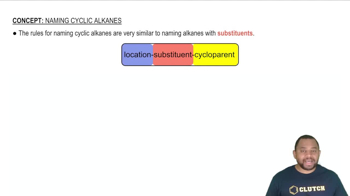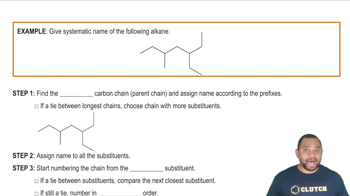Textbook Question
Draw both condensed and line structures corresponding to the following IUPAC names and label each carbon as primary, secondary, tertiary, or quaternary.
c. 2,2,4-Trimethylpentane
 Verified step by step guidance
Verified step by step guidance Verified video answer for a similar problem:
Verified video answer for a similar problem:



 2:26m
2:26mMaster Alkyl Groups Concept 1 with a bite sized video explanation from Jules
Start learning